Being an audiophile is more than having high-end and insanely overpriced equipment lined up in your listening room. It requires a specific level of knowledge and experience, as you would have for any hobby. Above all, it means knowing how to listen to music.
To listen like an audiophile, you should listen to lots of music from different genres, preferably live. This way, you’ll form a better idea of how high-fidelity music should sound. You also need to listen critically for specific instruments, sound qualities, and frequencies.
This article explores the stages involved in becoming a true audiophile and gives you a detailed guide on what you need to learn. Read on to get a better idea of how you can use your hi-fi equipment to its full potential.
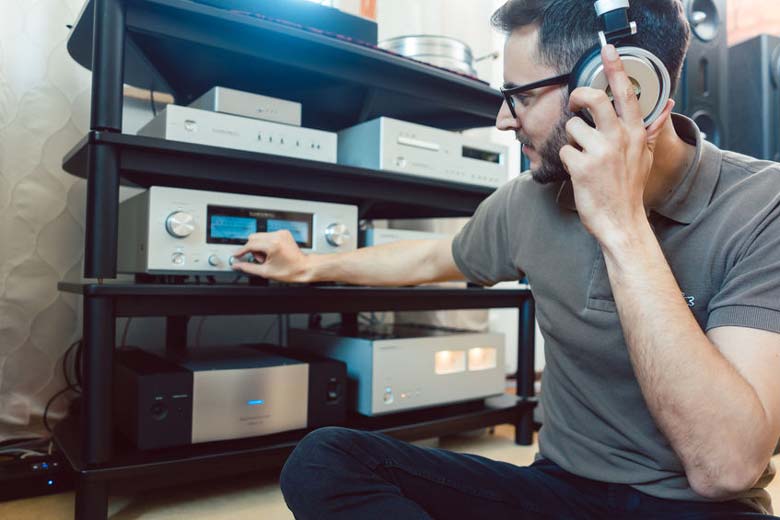
Learn What “Audiophile” Means
Being an audiophile means being enthusiastic about high-fidelity music. In other words, you’re after a hearing experience that’s as close as possible in quality to live music or the mixes produced in a studio. It means wanting to hear every single instrument in the greatest detail.
However, there’s a catch: you can never know how a music piece actually sounded when it was recorded. After all, you weren’t present in the recording studio when it happened.
However, the truth —although some audiophiles disagree on this— is that you don’t need to know.
You shouldn’t strive for 100% accuracy because, in short, it’s impossible.
No matter how high-end your equipment is or how high-fidelity the recording process was, you can never know if it’s the true sound.
What you should look for is the feeling that you get when you listen to live music.
There’s another reason for this: music-hearing is subjective. People hear music with their ears, but they process it with their brains.
Each brain is different, and each person has different tastes and preferences for how things should sound. You should decide for yourself what kind of music you prefer and how you should listen to it.
Make Yourself Familiar With the Terminology
Just like any specialized field, hi-fi music has its specific jargon and terminology. Becoming fluent in them is a crucial step in becoming a true audiophile.
The tricky part about learning these terms is that they aren’t just abstract entities you can memorize and be done with them.
They all have physical equivalents that you should get acquainted with by listening to lots of music and experimenting with different devices.
Knowing what things like “harmonic distortion” or a “brilliant” treble means is essential when picking out equipment.
Both manufacturers and the audiophile community use these words to describe their products.
If you don’t know what each thing means and how it affects your listening experience, you won’t be able to make the right gear choice —or understand why you like one sound system over another.
Fortunately, you can find video tutorials all over the internet that can help you become familiar with audiophile terminology. This audio terminology glossary is a good starting point to learn the meaning of some key terms. As you learn a new concept, search for its manifestation in the music you listen to.
Learn How To Listen
As an audiophile, the way you listen to music has to be different from the average music fan. A casual music listener plays music in the background while doing everyday stuff. More often than not, they don’t dedicate themselves wholly to it.
Meanwhile, an audiophile needs to commit themselves to listening. This means listening religiously, removing every distraction in the surrounding environment, obsessing over small details, and getting submerged in the music.
An audiophile can often detect details that a layperson can’t.
Read more: Can Audiophiles Really Tell the Difference in Quality?
As you become more experienced, you’ll be able to focus on one instrument for the entire playback time and know how it fits into the whole piece.
Learning to listen means training your ear. It takes time, but you’ll eventually develop a deeper appreciation for music.
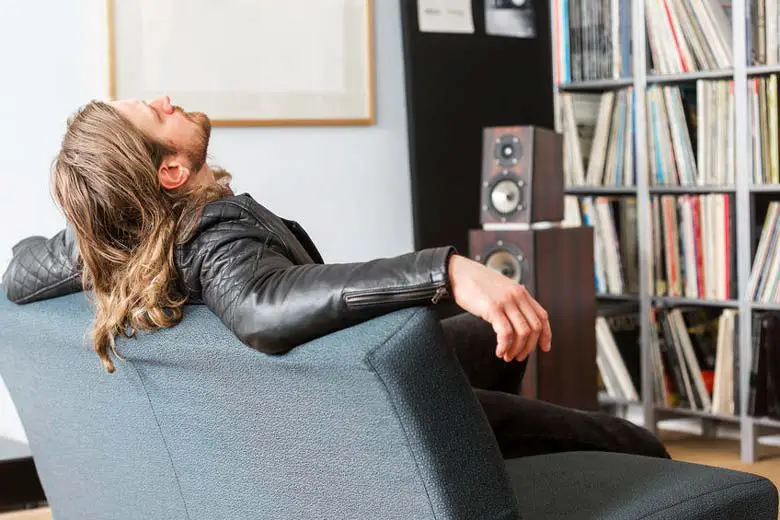
Here are some key sound features you should listen for as an audiophile:
- Balance. Balance refers to the distribution of each instrument in the whole mix. If some instruments are louder than others and dominate the mix, there’s no balance. Of course, this is sometimes done on purpose. You’ll have to learn when to make the call.
- Panorama. This feature has to do with the placement of each instrument in the stereo field, which you should be able to identify. Panorama is closely related to dimension, which means the placement of instruments in relation to each other. Ask yourself which instruments are sitting nearer or farther from you and each other.
- Dynamics. Dynamics can refer to changes in volume, but it can be broader than that. It’s all the variations in how things sound that make music come alive. Look for changes in volume, tempo, timbre, distortion, and tone in a specific track or instrument.
- Imaging. Imaging refers to how sounds are distributed across your speakers to create an illusion of spatial locations. It’s closely related to soundstage, which is the imaginary space where the instruments are arranged. Try to listen for where the instruments are coming from.
Listen To a Lot of Music
A true audiophile listens to music—lots of it. You’re a music lover, so your exposure to music should be broader than mainstream artists in the top 40. As you expose yourself to a wider range of music, you’ll develop your own personal audiophile taste.
It’s fine to be interested in only a few genres. However, expanding your music listening will lead to a better grasp of the ins and outs of music production and recording.
There’s another thing that every striving audiophile should do to find their music character: listen to lots of live music. Only by doing so will you grasp what feelings each musical instrument stirs in you and how you want them to sound.
Having a clear picture of the music quality you want helps you reproduce it more easily. Remember, high-fidelity music means being closest to “live” music.
In addition, by listening to lots of music, you’ll learn about different types of sounds and decide which one you prefer: crisp, bright, warm, harsh, dark, etc. You may even like different sound types for different music genres.
Again, there’s nothing right or wrong about the kind of music you hear. It’s all about personal preferences.
Alternatively, you could ask a seasoned audiophile or even your local music shop to play different devices for you and help you pick your preferred type.
And remember, as an audiophile, you should always be learning. It’s like learning a new language; you’ll never reach a specific point where you can say you’ve finished learning the language.
There’s always something new to learn as musicians continue to release new pieces every day. Use this as an opportunity to expand your knowledge about music.
Find the Right Format
An average music fan is happy with whatever they can get their hands on regardless of the format, from downloaded MP3 to streaming services. However, an audiophile should know about the different music formats out there and which ones excel over others.
In addition to listening to lots of music, you should listen to them in different file formats to find your perfect match.
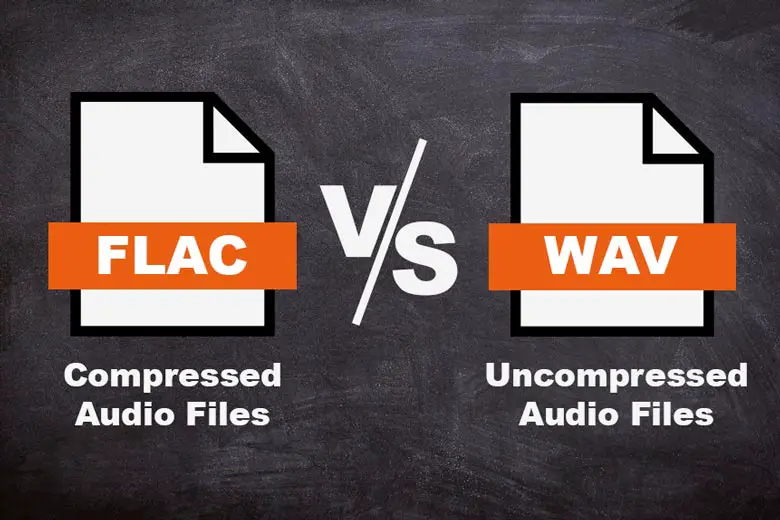
Formats can be either compressed or uncompressed. Uncompressed formats, such as WAV and AIFF, are converted into digital forms exactly how the musicians produced them. No bits are lost, and every bit from the source is identically copied into the file.
The main problem with these formats is their huge size. They will fill your hard drive before you know it. Audiophiles need either dedicated HHDs or hundreds of CDs or DVDs if they want to store uncompressed files.
Compressed files are much smaller. As their name suggests, tracks are compressed to take much smaller spaces.
Compressed files can be either lossy or lossless. Lossy files lose a good chunk of their bits in the compression process.
Common formats such as MP3, WMA, OGG, and AAC are all lossy. Low-quality lossy files are a no-no for audiophiles.
Read more: 320 KBPS vs. Lossless Audio: The Differences Explained
Lossless formats give you the best of both worlds: they reduce the size without sacrificing quality. When you play a lossless file on a device that can decode it, the track will return to its original state, retaining every single bit.
The most frequently used lossless file formats are ALAC, FLAC, AIFF, DSD, and MQA. The choice between these lossless files depends on the playback or streaming device you have. Not all software can decode every one of these formats.
If you’re in doubt, FLAC is a safe bet. It’s the most common of the group.
Read more: Is FLAC Better Than WAV? Here’s What You Need To Know
In theory, a high-quality MP3 (320 kbps) only sacrifices frequencies that are outside the human hearing range. Still, many audiophiles swear for the fuller sound of lossless formats.
Take Care of Room Acoustics
Room acoustics play a critical role in getting the most out of your equipment. Your high-end devices will sound barely average if your room acoustics aren’t audiophile-friendly.
Windows, walls, fireplaces, and even open closets can create unwanted resonance and reflection. The soft and hard furniture you have in your room, the building’s construction materials, and even the dimensions of the room all can dampen, boost, or reflect sound, affecting the final result.
All of these issues can be even trickier if you live in a small apartment that limits your options for positioning equipment (more on that in the next section).
The most important thing to do for your acoustics is treating your room and minimizing reflections. Find your room’s early and late reflection points and treat them by placing acoustic panels.
You can also resolve bass issues by installing bass traps in key spots, depending on your room setup.
You may also need to replace some furniture or move pieces around to get the best results.
Another thing you should consider is your listening position. For example, if it’s near a wall, you might hear some distortion—the soundwaves bouncing on the near wall will get to your ears sooner than the ones that bounced in a farther wall.
Check out this useful YouTube video on how to treat your room for better acoustics:
Understand the Equipment
After becoming familiar with the audiophile world, you need to know what equipment you should use to play your music. If you get obsessed with the hi-fi world, this is a never-ending quest. Get ready to dedicate large amounts of money and time to build and refine your hi-fi setup.
When preparing a sound system, you need to know about the different steps in the audio chain, their qualities, and if they’re compatible with each other.
In addition, you should know about the terms and numbers that define the qualities of each piece of equipment. Some of these are:
- Bitrate and sampling rate
- Speaker resistance and power
- Amplification
- Solid-state or tube amps
- Digital-to-Analog Converters
All of these factors will influence your device choice.
Remember not to be extremely picky. You run the risk of getting lost in technicalities and numbers instead of enjoying the music.
Rather than focusing on perfection, strive for improvement.
Try to get the essential equipment within your budget and then focus on improving every piece of the chain down the road. As you get more educated and experienced, you’ll learn what you want and which equipment can help you achieve that result.
The bitter reality is that you need to have a significant disposable income if you want to become a true audiophile. Many non-audiophiles criticize hi-fi enthusiasts for getting too obsessed with their equipment, which is valid in some cases. However, it’s inevitable to search for ways to improve your hi-fi audio system.
That said, being an audiophile is not about listening to equipment —it’s about listening to music.
You can still set up a decent audiophile system if you’re on a budget. Every gear that you add can take you closer to the immersive sound experience you want. If you feel happy with what you have, fair enough. You can up your game whenever you’re ready.
Being an audiophile is a lifelong hobby. You have many years to refine your equipment and take it to a higher level.
Get the Right Equipment
Choosing the right equipment may be the most challenging step of becoming an audiophile. You need to put whatever you’ve learned into practice and set up your system to officially start your journey as an audiophile.
Many things go into getting the right gear—budget being the most significant one. However, as mentioned, you don’t need to aim for perfection from the get-go; you can start small and then expand your setup as you get more experienced and learn what you want.
Note that many playback devices have built-in gear. They are designed to cut the budget by offering an all-in-one device. However, audiophiles don’t believe in built-in equipment. Anything that can be purchased as a dedicated, external device is preferred over built-in devices.
That’s because dedicated devices are more robust and involve less interference created by other components in the same device.
For example, an amplifier consists of a preamp and a power amp. These can interfere with each other and introduce noise. However, if you want something portable, you may want to sacrifice quality for practicality.
There’s also another way to view the issue. Some audiophiles prefer integrated devices because they believe the more devices you add to the signal chain, the more noise and distortion you’ll introduce.
This conflict is resolvable only by trying different devices and seeing their actual outputs.
When deciding on your hi-fi equipment, make sure to do your homework, talk to lots of experts and salespeople, and test-drive each piece if possible.
And remember, each building has its specific acoustic features, which means the sound you hear in an electronics store won’t necessarily be duplicated in your home.
Regardless of your budget and personal preferences, here are the main things you need in your audiophile setup.
Music Source
The source can encompass any playback devices that you choose based on your preferred file format and your budget. For example, if you’re into digital music, you may decide to play the music from your smartphone, laptop, or a portable hi-res music player.
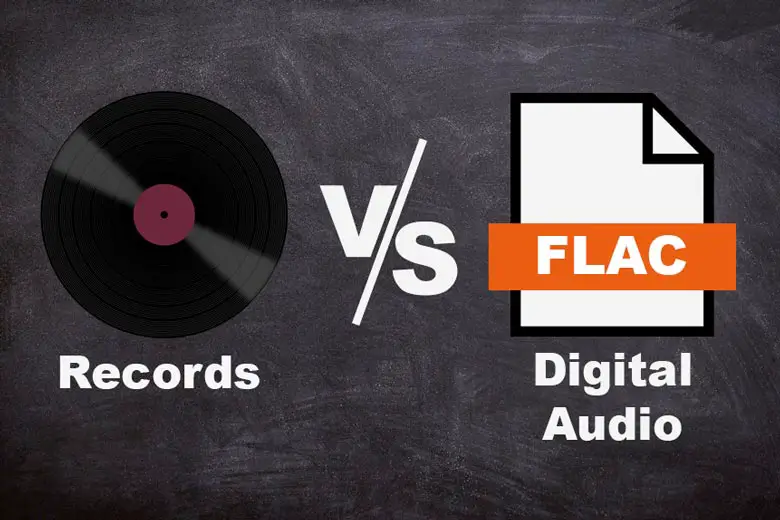
Many streaming services offer lossless music. If you go that way, you should look for streaming services that support hi-res file formats and have a large catalog, like Tidal, Amazon Music, or Apple Music.
Also Read: Is Tidal Hi-Fi Worth the Money? Here Are the Facts
If you want to go old-school and prefer warm, vintage sounds, you may want to play your music on a turntable and use vinyl records.
You may also decide to download your hi-fi music from online platforms, such as Qobuz, or get your favorite albums on CDs and rip them on your computer.
Amplifier
No hi-fi sound system is complete without an amplifier. The sound signals put out by your music source aren’t strong enough to be fed into the speakers. You need a device to boost and amplify these signals to an acceptable amplitude.
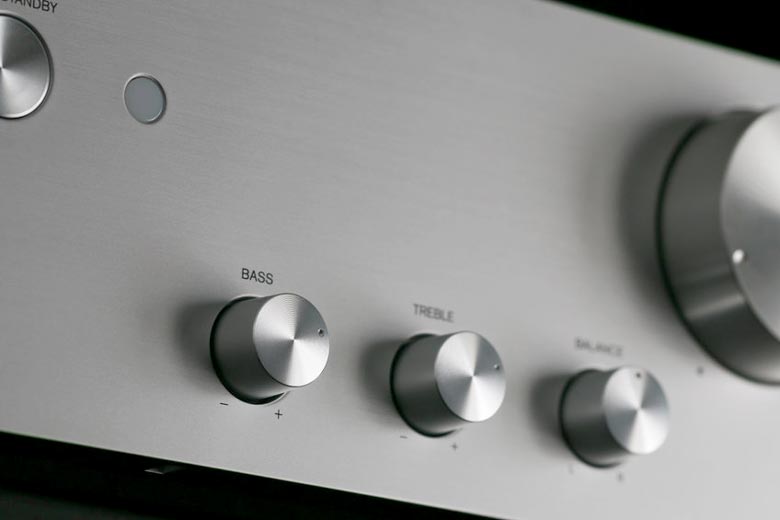
You can go for either dedicated pre and power amps or integrated amplifiers consisting of both.
There are also tube and solid-state amps, each with different designs and sound inputs.
Read more: Integrated Amp vs Preamp: What’s the Difference?
No matter which amp you pick, make sure the amplifier is powerful enough to drive your speakers by paying attention to their wattage and resistance values, which are expressed in ohms. If your amp is too weak, your speakers won’t be able to reach decent volumes.
You do need amplification in every set up, but you don’t always need a dedicated standalone amplifier.
One example where you don’t need to buy a separate amp is if you decide to use a set of active speakers. In that case, the amplifier is already built into the speakers.
Even though this option might not be the best alternative for experienced audiophiles, there are plenty of great active speaker models which would make every beginner audiophile happy.
Also, a standalone amplifier isn’t always necessary if you choose to use headphones instead of speakers.
However, some headphones require at least a smaller headphone amp to work properly, and many headphones will sound better with a dedicated amp, even though they might work without it.
Speakers
If you only have enough budget to buy one piece of equipment for your audiophile system, it has to be a pair of speakers (in addition to a playback device, of course). The built-in speakers on your laptop aren’t capable of giving you hi-fi sound.
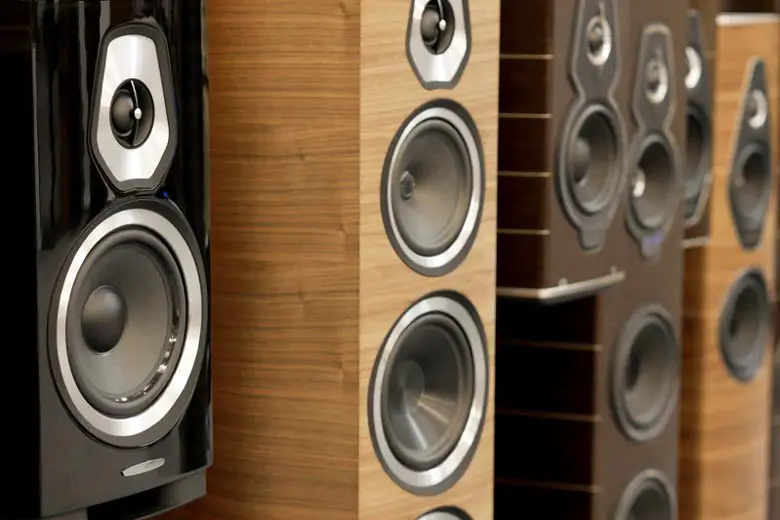
There’s an overwhelmingly large number of options, each with different features to consider. Start by making sure your speakers are compatible with the rest of your system.
Speakers may be the only part of the system which needs you to consider the space. Not every speaker is suitable for any room. You could go for wireless, portable, floor standing or bookshelf speakers.
You’ll also have to make a choice between active and passive speakers. The former has a built-in amplifier, which reduces your costs and is better fitted for small spaces. Active speakers are also a great option if you want to have audiophile quality sound from your computer.
It’s possible that a pair of speakers won’t show their character as soon as you start using them. You need to run them for at least 24 hours to give them enough time to “burn in”. Whether burn-in is real or a marketing buzzword is a hotly debated topic on audiophile forums, and you likely won’t find a definitive answer.
Remember to get a strong speaker stand to minimize vibrations and improve performance. As mentioned earlier, the positioning of the speakers is vital in the sound quality you’ll get.
Also Read: Speakers vs. Headphones: 5 Differences That Matter
Headphones
If you want to have your audiophile experience everywhere with you, a set of hi-fi headphones is inevitable. Depending on your preferences and budget, you could choose between wired, wireless, open-back, closed-back, over-ear, and in-ear options like IEMs.
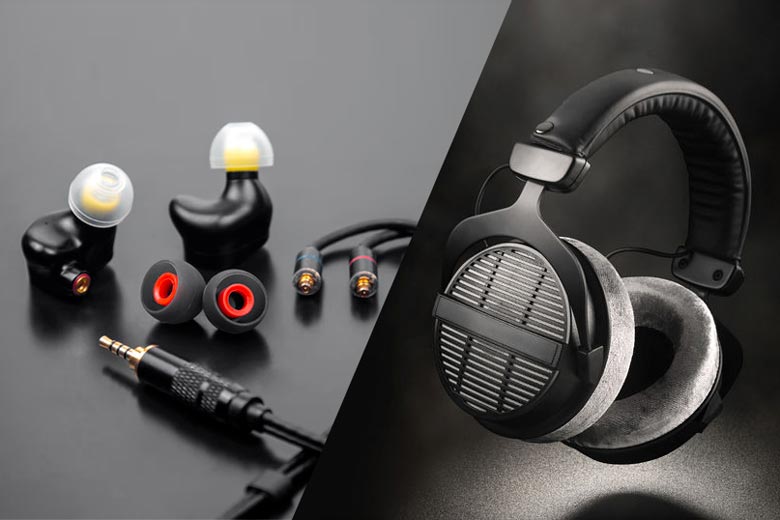
Headphones are the best choice if you’re on a tight budget.
Compared to speakers, they have a better ratio of quality to cost. However, they don’t offer as many possibilities as a pair of speakers.
Headphones are the easiest way to get into the audiophile hobby and start experience music in another way. If you only ever listened to music on a cheap home stereo system, built-in computer speakers, or with a pair of cheap earbuds, you will definiatly have a lot to discover if you go for slightly more expensive hifi headphones.
Read more: IEMs vs. Headphones: The Differences Compared
´Here are some of the best over-ear headphones right now:
DAC
If you decide to use digital playback devices like your smartphone and computer, it’s better not to rely on their built-in DACs. A DAC is an essential component that transforms digital sound signals put out by digital devices into analog signals readable by speakers.
Smartphones and computers have built-in DACs that are good enough for casual listening, but they’re nowhere near as powerful as a dedicated DAC.

Most DACs take up a bit of space and are designed to work with dedicated music players or a computer. However, you could also get portable DACs for your smartphone, like this AudioQuest Dragonfly Cobalt DAC, available on Amazon.com.
It’s a small dongle that attaches to your smartphone through its USB port. It’s not as powerful as a full-size DAC, but it will still give you a much cleaner sound.
Equalizer
Not many audiophiles include equalizers in an audiophile setup. They consider it a gimmick. The reason is that these devices introduce noise into the music and reduce its fidelity. They also “equalize” the frequencies, altering the music as intended by the musician.
However, all speakers and headphones are tuned by the manufacturer in a specific way, much like what an EQ does. So, if you don’t like your system’s original tuning, an EQ can fix that and actually improve the fidelity of your music.
Some audiophiles also use EQs to treat their room acoustics by balancing out any abnormalities in the output sound.
Position Your Equipment
After deciding on equipment for your hi-fi setup, you need to position it in an optimal way. You should spend days experimenting with different equipment positions to achieve your desired results.
The placement and direction of speakers related to your sitting area will have a significant influence on sound quality.
Even the placement of other equipment, such as the music player or DAC, can affect the final result.
Each room requires a different setup and speaker position, but there are a few useful rules of thumb:
- Make sure each speaker is at the same distance from your sitting spot, forming a triangle. This way, the sound coming out from both speakers will reach you at the same time, minimizing distortion.
- Position the speakers at the same distance from their back wall, so that their soundwaves bounce at the same time.
- Don’t place the subwoofer too close to the back wall.
You probably won’t find the ideal speaker placement immediately. You’ll need to experiment and listen closely to music to find your sweet spot.
Read more: Speaker Placement in a Small Room: The Complete Guide
Tweak Your Equipment Settings
Even if you have the most high-end gear, music might not sound exactly as you want it. This doesn’t mean that you have the wrong devices; rather, it means your device settings need some adjustments.
You should take a close look at frequencies: bass, midrange, and treble —some audiophiles add more categories, like sub-bass, mid-lows, and mid-highs.
Not all devices can be paired together. Their electronic and acoustic features affect each other, taking a toll on the final quality of your sound. You may experience a significant boost in quality when you switch one piece for another, even if it’s lower-end.
Conclusion
Even if you have those 1% devices with six-figure prices, you can’t consider yourself an audiophile unless you don’t train yourself to listen like one.
Being an audiophile is a never-ending quest to learn about sound, experience different types of music, and tweak your equipment to become ever closer to a high-fidelity playback.
By listening to lots of music and training your ears to listen critically, you can find your audiophile identity and set up your equipment in a way that creates your own ideal hearing experience.






